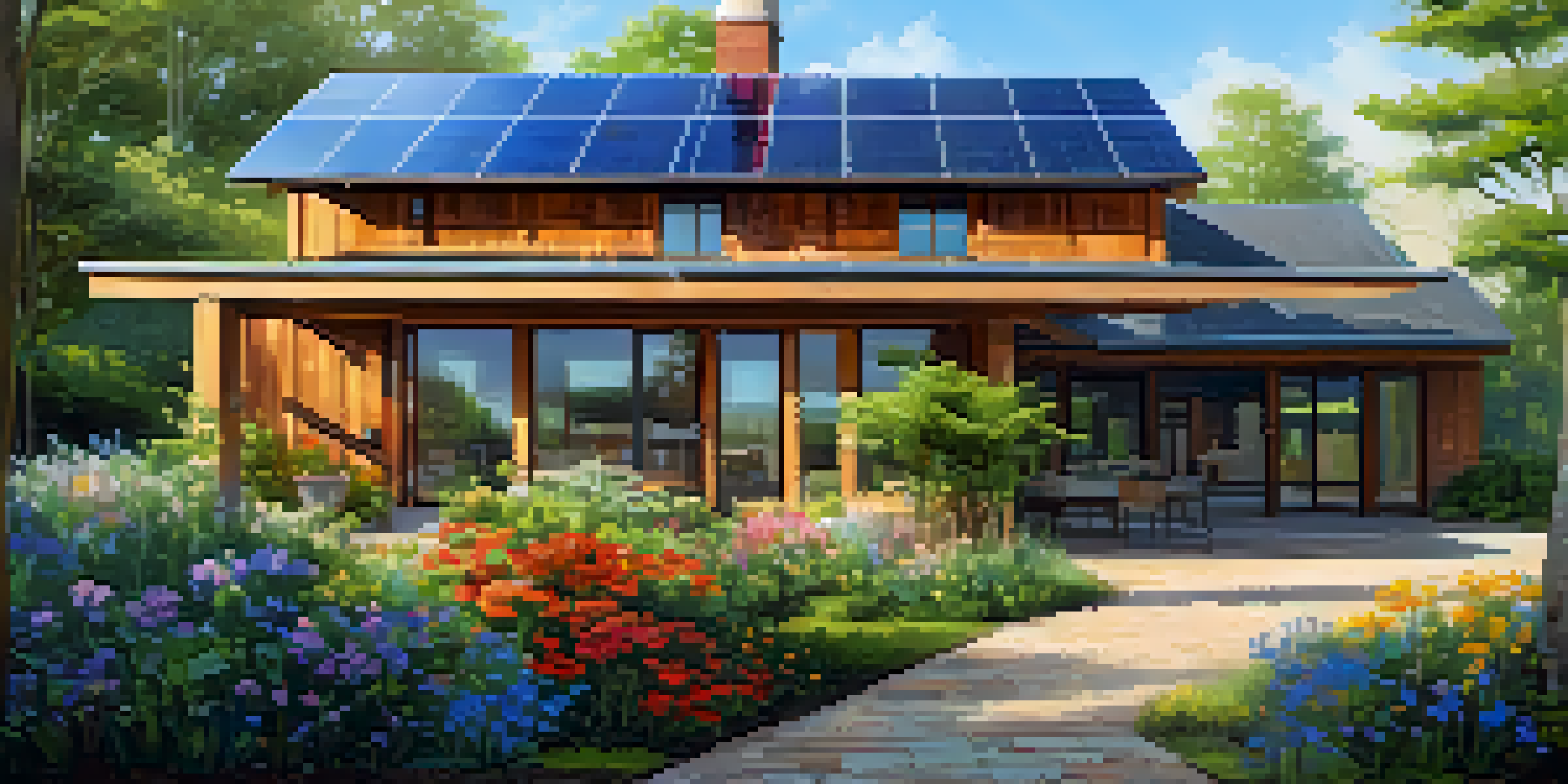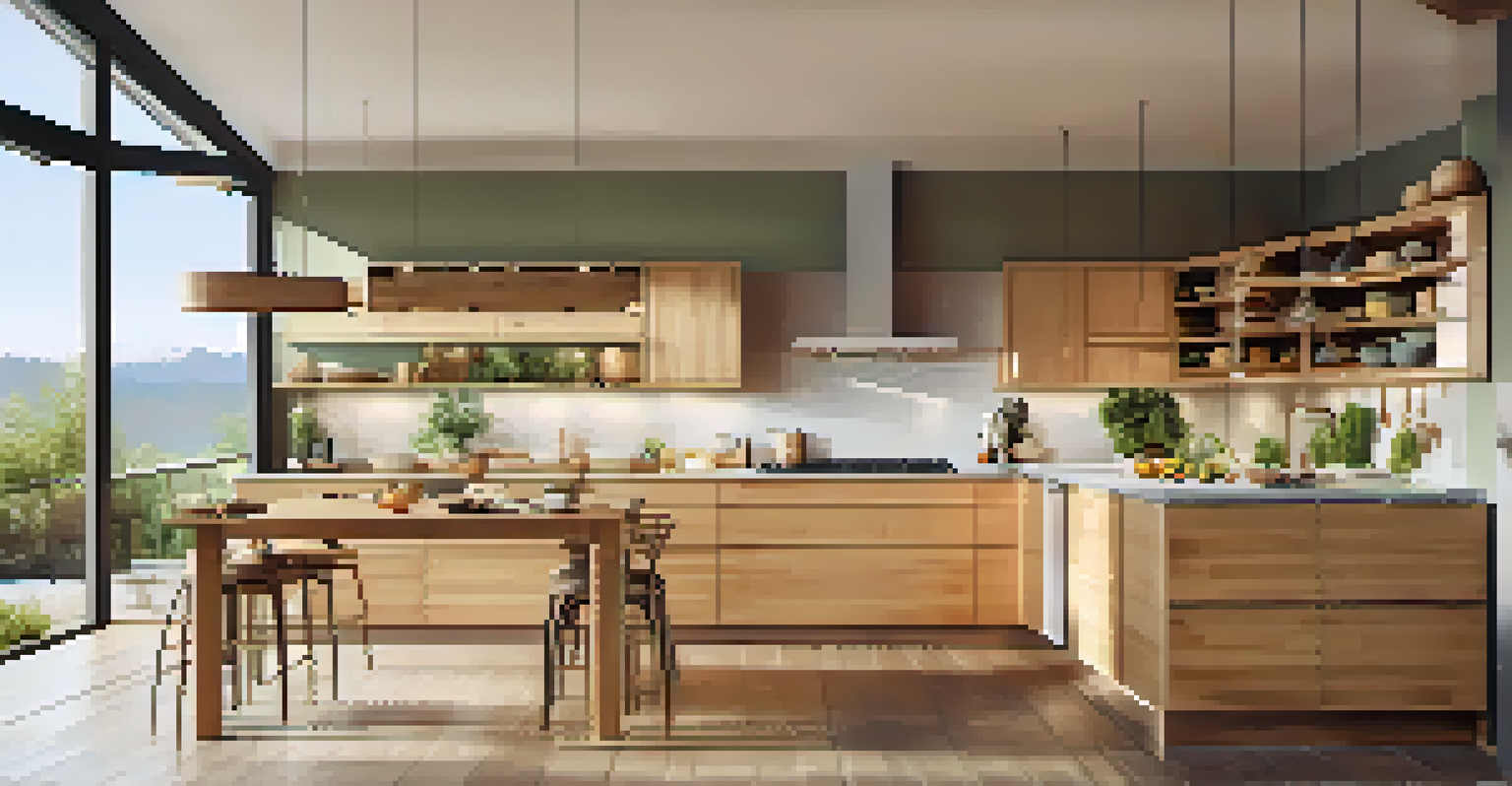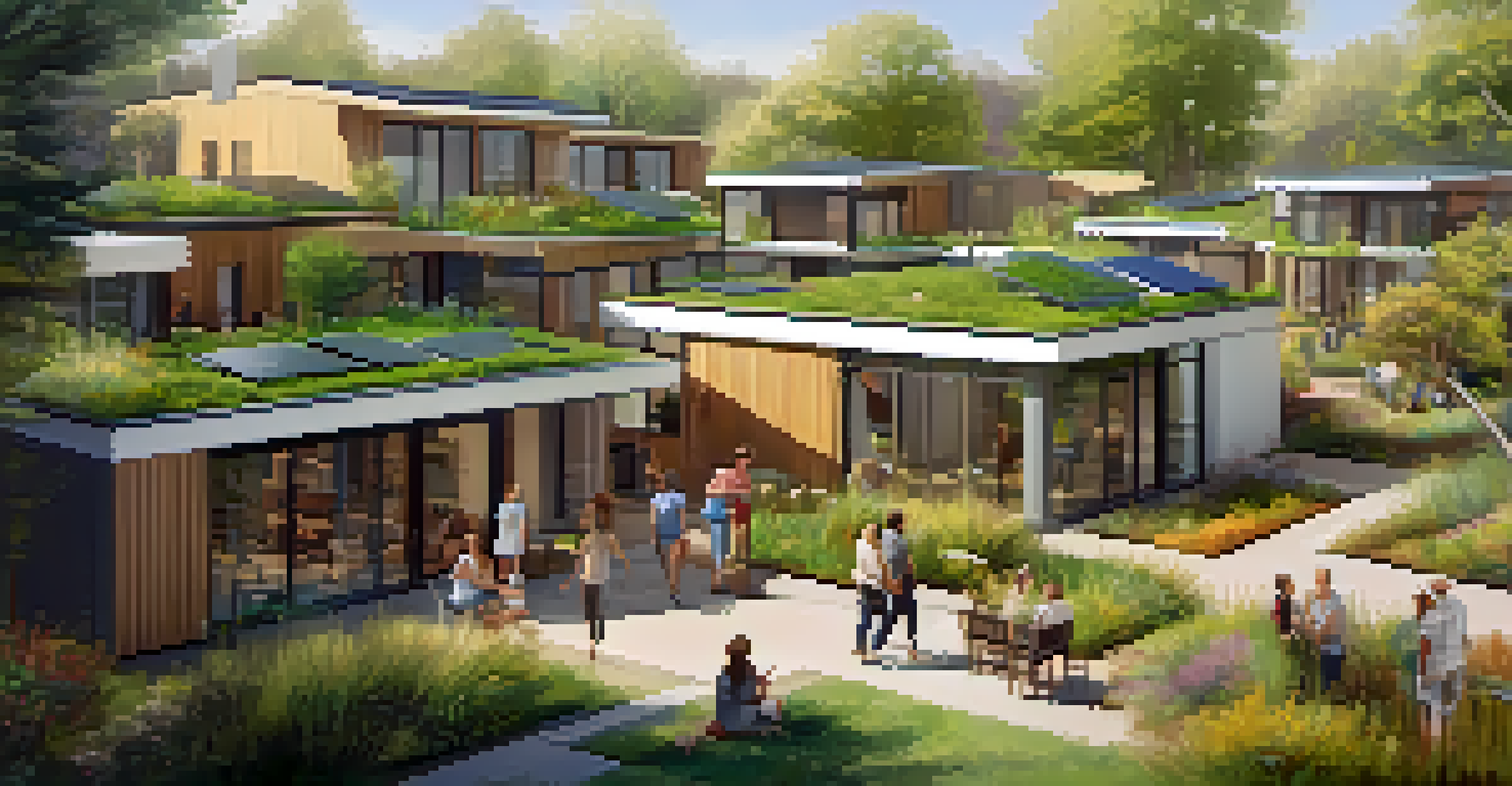Exploring the Future of Sustainable Home Construction

Understanding Sustainable Home Construction
Sustainable home construction focuses on creating buildings that minimize environmental impact. This approach not only conserves resources but also enhances the comfort and health of the inhabitants. By utilizing eco-friendly materials and energy-efficient designs, these homes aim to reduce their carbon footprint and promote a harmonious relationship with nature.
The greatest threat to our planet is the belief that someone else will save it.
Think of it like a gardener tending to a garden; every choice made—from soil to seeds—affects the overall health of the ecosystem. Similarly, the materials chosen for building a home can either support or hinder the environment. This interconnectedness is what makes sustainable construction so vital for our future.
As society becomes more aware of climate change, the need for sustainable practices has never been greater. Home construction is a significant contributor to greenhouse gas emissions, making the shift towards sustainable methods essential for a healthier planet.
Innovative Materials in Eco-Friendly Construction
Recent advancements have led to the development of innovative materials that are both sustainable and durable. For instance, bamboo is being used as a strong, renewable alternative to traditional wood. It grows rapidly and absorbs carbon dioxide, making it an ideal choice for environmentally conscious builders.

Another exciting material is recycled steel, which not only reduces waste but also offers incredible strength and longevity. Imagine building a home with materials that have a history, like recycled plastics or reclaimed wood, adding character while lessening the demand for new resources.
Eco-Friendly Materials Matter
Innovative materials like bamboo and recycled steel not only enhance sustainability but also offer long-term financial benefits.
These materials are not just eco-friendly; they often provide financial benefits too. Investing in durable and sustainable options can lead to lower maintenance costs and energy savings over time, proving that being green can be economically smart as well.
Energy Efficiency: The Heart of Sustainable Homes
Energy efficiency is a cornerstone of sustainable home construction, focusing on reducing energy consumption without sacrificing comfort. Think of it as making your home a cozy sweater, keeping warmth in during winter while allowing fresh air in during summer. Techniques such as proper insulation, energy-efficient windows, and smart home technology contribute significantly to this goal.
Sustainability is no longer about doing less harm. It’s about doing more good.
Solar panels are also becoming increasingly popular, transforming sunlight into electricity and reducing reliance on fossil fuels. Imagine waking up in a home powered by the sun, knowing that you’re contributing to a cleaner environment while saving on energy bills.
Moreover, energy-efficient homes often come with incentives and rebates from governments, making them not just sustainable but also financially appealing. It’s a win-win situation where you can save money while doing your part for the planet.
Water Conservation Techniques in Home Design
Water conservation is another critical element in sustainable home construction. As water scarcity becomes a pressing issue worldwide, innovative solutions like rainwater harvesting systems are gaining traction. These systems collect and store rainwater for non-potable uses, such as irrigation or flushing toilets.
Additionally, low-flow fixtures and appliances are designed to minimize water usage without compromising performance. Think of these fixtures as the efficient little elves of your plumbing system, working tirelessly to save water and reduce your utility bills.
Energy Efficiency is Essential
Energy-efficient features, such as smart technology and solar panels, significantly reduce consumption and promote a healthier environment.
By incorporating these water-saving features, homeowners can contribute to a sustainable future while enjoying the benefits of lower water bills. It’s about being responsible stewards of our most precious resource.
The Role of Smart Technology in Sustainable Homes
Smart technology is revolutionizing sustainable home construction by optimizing energy use and enhancing convenience. Smart thermostats, for example, learn your habits and adjust heating and cooling accordingly, ensuring energy is used efficiently. Imagine a home that knows when you're away and adjusts itself to save energy, all while keeping you comfortable when you return.
Smart lighting systems can also reduce energy consumption by automatically adjusting based on natural light levels or occupancy. Picture walking into a room where the lights turn on just for you, then dimming when you leave—such technology not only saves energy but also enhances the user experience.
By integrating smart technology, sustainable homes become more than just structures; they transform into responsive environments that contribute to energy conservation and a cleaner planet. It's a modern twist on the classic concept of home, where technology and sustainability go hand in hand.
Community Impact of Sustainable Housing
The impact of sustainable home construction extends beyond individual homes to entire communities. When neighborhoods adopt eco-friendly building practices, they foster a culture of sustainability that can lead to significant environmental benefits. It’s like planting a seed; when nurtured, it grows into a thriving ecosystem that supports both residents and the environment.
Communities with sustainable homes often experience improved air quality, reduced waste, and enhanced green spaces. Imagine walking through a neighborhood filled with trees, gardens, and energy-efficient homes; it's not just aesthetically pleasing, it’s healthier for everyone living there.
Community Benefits of Sustainability
Sustainable housing practices foster healthier communities, improve air quality, and encourage social interaction among residents.
Moreover, sustainable communities often encourage social interaction and collaboration among residents. When people come together to support eco-friendly initiatives, they create a sense of belonging and shared responsibility for the environment, paving the way for a brighter future.
Challenges and the Future of Sustainable Home Building
Despite the numerous benefits, the journey towards sustainable home construction is not without its challenges. High upfront costs for materials and technologies can deter some homeowners, making it essential to highlight the long-term savings and environmental impact of these investments. It’s like buying a quality pair of shoes; the initial price may be higher, but the comfort and durability pay off in the long run.
Another challenge is the need for skilled labor familiar with sustainable practices. As demand for eco-friendly construction rises, training programs for workers will become increasingly important, ensuring that they are equipped with the knowledge and skills to build sustainable homes effectively.

Looking ahead, the future of sustainable home construction is bright. With increasing awareness and innovation, we can expect to see more accessible options and a stronger commitment to environmentally friendly practices, making it easier for everyone to join the movement towards a sustainable future.